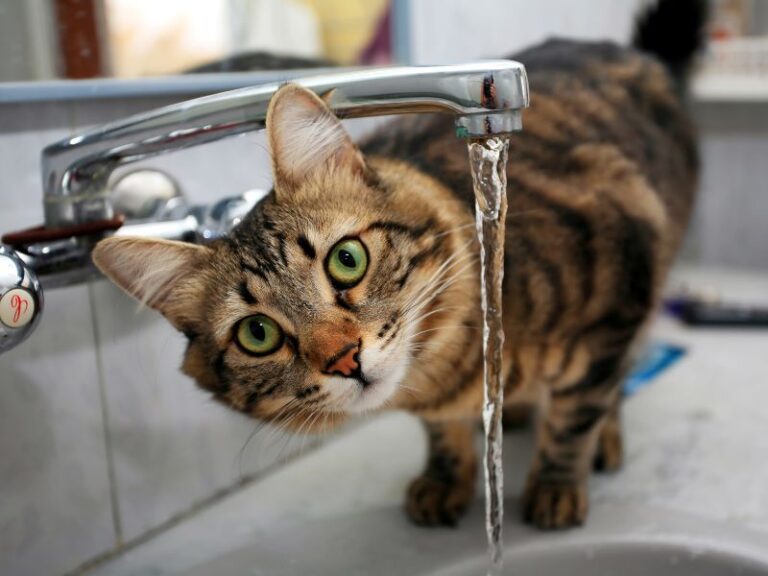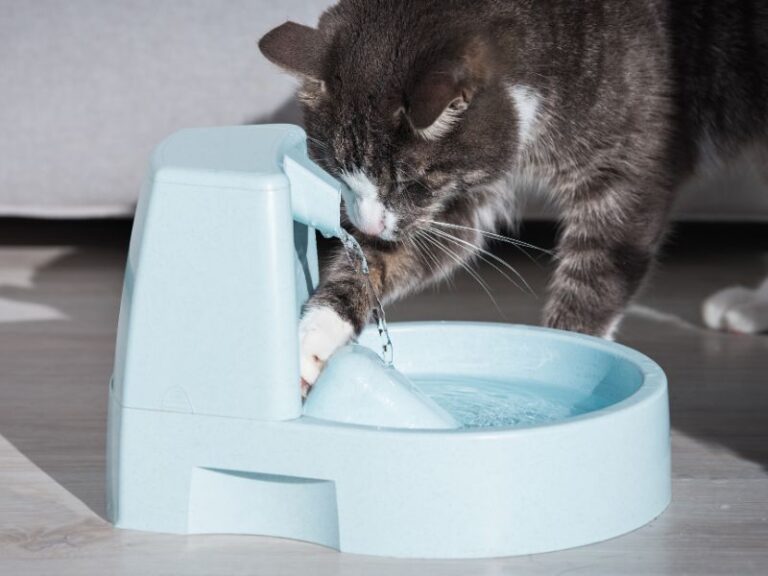Table of Contents
ToggleCats, those enigmatic and delightful companions, have their own way of communicating their needs and desires. If you’ve ever observed your furry friend acting a bit more restless or affectionate than usual, chances are, you might be witnessing the telltale signs of a cat in heat. This intriguing phase of feline behavior raises questions for many cat owners. What exactly does it mean when your cat is in heat? How can you provide the best care during this time? In this exploration, we’ll delve into the mysterious world of cats in heat, understanding their unique behaviors, and learning how to offer the comfort and care they need.
Cat lovers, seasoned and new alike, often find themselves bewildered by the behaviors exhibited by their feline companions during specific periods. The quest to comprehend these behaviors and provide the best care possible is what drives responsible pet ownership. So, let’s embark on this journey of discovery, unraveling the signs that your cat is in heat and uncovering the secrets to nurturing them through this natural phase. Whether you’re a curious cat enthusiast or a concerned cat parent, understanding cat heat cycles can lead to a happier and healthier bond between you and your feline friend. So, let’s dive in and unravel the enigma of the “cat in heat.”
Understanding Cat Heat Cycles
Before we delve into the signs and symptoms, it’s essential to grasp the concept of cat heat cycles. Just like many other mammals, female cats experience estrus, commonly known as being “in heat.” This cycle is characterized by hormonal fluctuations that trigger various behavioral and physical changes in your cat. Unlike humans, who experience menstruation, female cats experience estrus as a means to prepare for potential mating and reproduction.
Each cat’s heat cycle can vary in duration and intensity, but on average, these cycles occur every two to three weeks. The entire cycle can last anywhere from four to ten days. Understanding these cycles is crucial for identifying the signs that your cat is in heat and knowing how to provide the care it needs during this time.
The Mysterious Cat in Heat: Understanding Feline Estrus
As responsible cat owners, recognizing the signs that your cat is in heat is essential for both her well-being and your peace of mind. While some cats might exhibit all the classic signs, others might be more subtle in their expressions. The next sections will delve into these signs, ensuring that you’re well-equipped to decipher your feline friend’s behavior and cater to her needs during this intriguing phase. So, let’s explore the world of a cat in heat, decoding her vocalizations, restlessness, and increased affection.
Signs Your Cat Is in Heat
As a cat owner, being attuned to your feline companion’s behaviors is crucial for providing the care and attention she needs. When your cat is in heat, her body undergoes significant changes, both behavioral and physical. Here are some key signs to watch out for, indicating that your furry friend is experiencing estrus:
- Vocalizations: One of the most distinctive signs of a cat in heat is her vocalizations. You might notice her meowing more frequently and with a different tone than usual. These vocalizations can range from plaintive cries to more urgent yowls, which are her way of signaling her availability to potential mates. While it might be a bit perplexing, these sounds are entirely normal during this phase.
- Restlessness and Agitation: Is your usually calm cat suddenly more restless? Cats in heat often display restlessness, pacing around the house, and exhibiting heightened levels of energy. You might find her rubbing against furniture, walls, or even you in an attempt to alleviate her discomfort.
- Increased Affection: While some cats become more aloof when in heat, others become remarkably affectionate. Your cat might seek your attention more frequently, rubbing her head against you, purring incessantly, or even engaging in gentle nibbling. This change in behavior is her way of seeking comfort and attention during this bewildering time.
- Elevated Tail and Rear End Position: If you observe your cat holding her tail to the side and lifting her rear end, it’s a classic sign that she’s in heat. This posture is an invitation to potential mates, signaling her readiness to mate.
- Excessive Grooming: Cats are known for their grooming habits, but you might notice an increase in grooming behavior during estrus. Your cat might groom herself excessively, focusing particularly on her genital area, as her body releases pheromones that attract male cats.
- Rolling and Kneading Movements: Cats in heat might exhibit rolling and kneading movements, often seen in kittens when nursing. These actions are instinctual and serve as a way to display her availability to mates.
Recognizing these telltale signs can help you understand your cat’s needs during this time. It’s important to note that a cat’s first heat cycle can occur as early as six months of age, so being prepared to identify these signs is essential for responsible pet ownership. Now that we’ve explored the signs of a cat in heat, let’s move on to understanding the duration of their heat cycles and how you can provide the best care for them during this phase.
How Long Are Cats in Heat?
Understanding the duration of a cat’s heat cycle is essential for anticipating and managing its behaviors during this time. While individual cats may have variations in their cycle lengths, there’s a general timeframe that can give you a better idea of what to expect.
On average, a cat’s heat cycle lasts about a week, but it can range from four to ten days. This cycle is characterized by several distinct phases, each marked by specific behaviors and physiological changes. Here’s a breakdown of the typical stages your cat will go through during her heat cycle:
- Proestrus (1-2 days): This is the initial phase of the heat cycle. Your cat might display restlessness, increase vocalizations, and become more affectionate. However, she won’t yet be receptive to mating.
- Estrus (4-10 days): This is the main phase of the heat cycle when your cat is receptive to mating. Her behavior will be at its most pronounced during this time, including the vocalizations, restlessness, and affectionate gestures mentioned earlier.
- Interestrus (1-2 weeks): If your cat doesn’t mate during the estrus phase, she’ll enter the interestrus phase, which is a period of sexual inactivity. This is a time for her body to rest before the next cycle.
- Anestrus (2-3 weeks): This is the phase of reproductive rest. During this time, your cat will not display any signs of being in heat.
It’s important to keep in mind that cats are individuals, and their cycles can vary. Some cats might experience longer or shorter cycles, and the frequency of their cycles can also differ. Factors such as breed, age, and environmental conditions can influence the duration and intensity of a cat’s heat cycle.
Caring for Your Cat in Heat
As your cat goes through her heat cycle, providing the right care and environment can make a significant difference in her comfort and well-being. While it might seem like a perplexing time, a little extra attention and some simple adjustments can help both you and your feline friend navigate this phase smoothly.
Tender Loving Care: Nurturing Your Cat in Heat
- Create a Calm Environment: Cats in heat can be more sensitive to changes in their surroundings. Ensure a quiet and secure space where your cat can retreat and feel safe. Providing her with a cozy bed and some soft blankets can help her relax during this time.
- Keep Her Indoors: During the heat cycle, it’s best to keep your cat indoors. This prevents her from encountering potential mates and also reduces the risk of unwanted pregnancies.
- Interactive Playtime: Engaging your cat in interactive play can help alleviate restlessness and channel her energy. Toys that mimic hunting behavior, such as feather wands or puzzle feeders, can be particularly engaging.
- Distraction and Enrichment: Providing distractions can help divert your cat’s attention from her discomfort. Puzzle toys or treat-dispensing toys can keep her mentally stimulated and occupied.
- Maintain a Clean Litter Box: A clean litter box is essential for your cat’s comfort. Ensure that the litter box is cleaned regularly to prevent any aversion to using it.
- Comfort and Affection: Offering your cat extra attention and affection can provide comfort during this time. Gently petting and spending quality time together can reassure her and strengthen your bond.
- Consult Your Vet: If you’re concerned about your cat’s behavior or health during her heat cycle, don’t hesitate to consult your veterinarian. They can provide guidance on managing her symptoms and ensure that she’s in good health.
While your cat’s heat cycle might present some challenges, remember that it’s a natural and temporary phase in her life. By understanding her needs and offering the right care, you can help her navigate through it with comfort and ease. As you continue to care for your feline friend, keep in mind that spaying or neutering is an important step to prevent future heat cycles and contribute to her long-term well-being.
Cat Mating Season and Behavior
Nature has an intricate way of orchestrating life’s processes, and the behavior of cats during mating season is a testament to its complexity. Understanding the connection between a cat’s heat cycle and her mating behavior can shed light on the remarkable instincts that drive these creatures.
Relevant >> Guide to Cat Mating and Reproduction
Nature’s Call: Cat Mating Season and Behavior Unveiled
- The Instinctual Drive: Cats are creatures of instinct, and during mating season, these instincts kick into high gear. Female cats in heat emit powerful pheromones that attract male cats from a distance, often leading to increased male feline activity around your home.
- The Courting Dance: Male cats, known as toms, respond to the pheromonal call of a female in heat. They may engage in a courting dance that includes behaviors like spraying urine to mark territory and yowling to announce their presence. These behaviors might be perplexing to human observers, but they’re a vital part of the mating ritual.
- The Mating Process: When a male cat detects a receptive female, the mating process begins. It’s essential to note that the mating act itself is not a gentle affair. It often involves the male biting the female’s neck and gripping her with his teeth to keep her in place. This can lead to the female yowling in response, which might sound distressing to human ears.
- The Post-Mating Phase: After mating, female cats might display some unique behaviors. They might continue to groom themselves excessively, which can be attributed to the pheromones deposited by the male during mating. Additionally, some females might exhibit a temporary disinterest in food.
- The Importance of Spaying and Neutering: The behavior associated with mating season highlights the importance of spaying and neutering. Spaying your female cat not only prevents unwanted pregnancies but also eliminates the stress and potential risks associated with multiple heat cycles. Neutering male cats reduces their territorial behaviors and minimizes the urge to roam in search of receptive females.
Understanding cat mating behavior and the instincts driving it can provide valuable insights into your cat’s behaviors during this time. While it might be a burst of activity and behaviors that seem perplexing to us, it’s all a part of the intricate dance of life that nature has choreographed over countless generations.
Final Words
Navigating the world of cats in heat is a testament to responsible pet ownership. By recognizing the signs and behaviors indicative of a cat in heat, you’re better equipped to provide the care and attention she needs during this natural phase. Understanding the duration of her heat cycle empowers you to anticipate her needs and create a comforting environment.
Delving into cat mating behavior reveals the intricate dance of instincts and rituals that govern this phase. While it might be perplexing to us, it’s nature’s way of ensuring the continuation of life.
As you care for your cat through her heat cycles and beyond, remember that your efforts contribute to her overall well-being. Regular veterinary care and responsible choices like spaying and neutering contribute to her long-term health and happiness. By embracing your role as a dedicated cat parent, you forge a deeper connection with your feline companion, enriching both your lives in the process.






